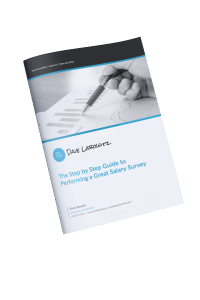Fund your business adequately is the fifth part of a twelve-part series. It’s a deep look behind the scenes of the “business playbook” that makes VC-backed companies successful and how to apply these lessons to your business.
- If you’re looking for the introduction to the series and first article, please click here.
- If you’re looking for other articles in the series, links are at the bottom of this article. Enjoy!
5. Fund your business adequately
I’ll start this article with a disclaimer: if you’re thinking about funding a new or expanding business with personal resources you may have a hard cap on the amount of cash available. If you’re in that situation, it makes some of the content of this article purely theoretical. You can’t invest cash you don’t have, right?
I get that, and I understand how it can be frustrating to be pelted with recommendations you can’t afford at the moment. That being said, even if you don’t have much wiggle room to make financial moves right now this article should still be worth a read. Finance will continue to be a relevant topic for the life of your company, so what you read today may help you later.
How much capital is adequate to fund your business?
One thing all VC-backed companies have in common is that, at least at the beginning, they were funded with enough capital to reach their next major milestone. Or, at least they were funded with what they and their investors thought was enough at the time.
In contrast, I’ve worked with many self-financed entrepreneurs who funded their business with less cash than they knew they really needed. “I’ll get started and figure out the rest when the time comes,” is not a financial strategy that works often. I respect the gumption, but without a clear understanding of your budget, it’s very easy to underestimate how much cash your growing business will need.
I suggest putting together your best guess at a one-year budget for any new business. Then cut the revenue in half and double the expenses. Fund your business based on this scenario, not your best guess. Things generally take twice as long as you think when you’re getting started. There’s also always some random, unexpected expense lurking around the corner. It’s better to be prepared.
Fund your business for the next milestone
The next key to funding your business adequately is to invest enough so your company can reach its next major business milestone. Depending on the type of company you’re building this can be very simple or quite complex. Here are some examples of what I mean by major business milestones:
- The completion of the MVP (minimum viable product) of your software or app
- Your first paying client
- A qualified sales pipeline of $1m plus
- A completed, published case study of a national reference client
- The opening of a manufacturing facility that increases margin and reduces inventory level
- A patent being approved
- Profitability (woohoo!)
Which milestones do I need?
If you’re starting a SaaS business, you may need to plan for a lot of different milestones. Achieving each consecutive milestone should enable you to raise more money for the next one. You’ll want to raise enough money in each round to reach a milestone that validates your ongoing trajectory and increases your valuation.
Alternatively, if you’re planning on opening a solopreneurship out of your home you may not plan on funding your business with more capital down the road. In that case, the only milestones you may be planning for are getting to your first dollar of revenue and, ultimately, profitability.
In either case, though, if you don’t have enough cash to pay for what you need until your next milestone your business will face serious risks. Here are a few examples.
Buying customers takes capital
Buying customers? That sounds a bit odd, doesn’t it? It may be a different way of looking at things than you’re used to! However, the sooner you adopt this train of thought the better off you’ll be. No matter what they are, your sales and marketing efforts cost money. You’ll need to invest in sales and marketing strategies if you want reliable growth. These can range from extreme expenses like trade shows to small expenses like the gas you put in your car to drive to a sales meeting.
One of the most critical metrics for any business is Customer Acquisition Cost (CAC). You can calculate your CAC, by dividing your sales and marketing expense by your number of new customers.
Here are two examples:
A tradeshow: $20,000 expense to build a booth, $17,000 for space rental, $2,000 for travel and other expense = total spend of $39,000. If you get 10 new customers at that tradeshow, your CAC is $3,900.
Advertising for an e-commerce store: You spend $500 on Google Adwords to drive traffic to your e-commerce store. If you pick up 20 new customers from that ad, your CAC is $25.
Once you know your CAC you can figure out how much it will cost to buy enough customers to hit your financial goals. For example, in the case of the e-commerce store above, suppose the average purchase is $100 and the average customer only purchases once. If you want to create $1 million in revenue, you’ll need to buy 10,000 customers. 10,000 * your CAC of $25 = $250,000. See? Customers cost money! And that’s not even counting the cash requirements for cost of goods, packaging, shipping, etc.
I’m sure some of you are wondering about “free” customers. They may come in from word of mouth, a viral post, lucking into page one of Google, or some other such good fortune. Sure, these things happen, and it’s awesome when they do. But unless you’re a very well-established business with enough history to be predictable, I suggest against relying on new customers from these sources. Your ability to grow your business is more about your proactive actions, not good fortune!
Fund your business so you have the ability to respond to unexpected problems
The biggest reason not having adequate financing creates risk is because if something goes wrong you have fewer resources to handle it. For example, suppose you run a software business and all of a sudden a cyber-terrorist starts attacking your server stack (yes, this happened to me). You will be stuck calling in an expert cybersecurity team that charges $10k to even get on the phone with you. Implementation of a defense solution will run another $25k+. If you don’t have the cash, or at least emergency access to the cash, something like this can spell an instantaneous end to your business.
Fortunately, we were adequately funded. The cyber-attacks resulted in a sleepless four-month battle which involved three different FBI offices and tens of thousands of dollars in unbudgeted expense. It sucked, but we survived it. If we hadn’t been adequately funded that crazy experience would’ve been the end of our company.
If you don’t fund your business adequately you may not be able to afford the right strategy
Sometimes great opportunities are only available when you’re well-funded. Unless you’re in the extraordinarily rare position where your customers pay in advance, delivering your service or product to your customer costs you money well before you realize revenue! Think about this scenario: you are just entering your second year of selling a new, innovative widget. Your cost of goods for the widget is $5 and you sell it at retail for $20 at a very healthy gross margin of 75%. In your first year, you’ve done $300k in sales and revenue is growing steadily at a reasonable pace.
Suddenly, Walmart calls. They want to stock your widget and want a slightly customized version exclusive to Walmart! Their initial order will be for 100,000 units. Sounds great, right???
Some sales aren’t about profit
Since Walmart can be a big bully, let’s assume they offer $7.50 per widget. The visibility and volume could really put you on the map for some explosive growth, even without much profit. Here’s the challenge: you need to order your widgets, packaging, and labeling 60 days before you can deliver the product. That means you need to almost instantly come up with $500k to invest in inventory.
To make matters worse, let’s say Walmart pays invoices Net 120, again, because they’re a big bully. That means you’re going to be out of pocket $500k for six months before Walmart condescends to pay your (tiny) invoice. What Walmart considers a “tiny invoice” is more than a year’s worth of revenue to date. Oh, and by the way, they also reserve the right to return any inventory that’s unsold in their stores after three months. This leaves you with a nasty Sword of Damocles hanging over your business. Remember, these are custom widgets. You won’t be able to sell them anywhere else if Walmart returns them.
This is a somewhat simplistic example, but do you see how much more strategic flexibility a well-funded company has in making this decision? Even at breakeven, a deal like this could easily result in the visibility to catapult your business to the next level. An underfunded, bootstrapped company wouldn’t have the option of considering it at all.
People are expensive
The primary driver of business success frequently boils down to the quality of your team. Most of the time the first thing a VC-backed company does after closing a round of financing is to hire up some high-quality talent. In the case of a Series A round, priority one is to fill out the executive team. After closing a $1 million+ A round, the executive salaries are manageable. After all, you’re going to be adding a ton of horsepower.
Without the financing, though, most founders never hire this level of team. At least, not until the story of their company is pretty much already written. If you can afford to hire a team of $150k+ executives then you’re probably already successful. So, in general, this level of hire simply doesn’t become part of a bootstrapping strategy.
Instead, you’re left wearing all the hats. You may be able to handle it all and figure it all out, but you’ll be stretched far thinner. Everything will take longer. Much longer! As a simple example, what if the VP of Sales you would hire if you had financing had 20 years of industry experience and a golden Rolodex to get you in the door with any of your target customers? That type of hire can be a shortcut to massive growth. If you have to start fresh and build all those relationships yourself it’s going to take a lot longer!
Competition is coming
Even if you start without direct competition, the moment your business starts to generate some real success competitors will start popping up out of nowhere. If you want to be able to protect your lead, it’s going to cost you. Some competitors may copy your product or service to the point where they save on virtually all of the development costs. These savings will give them a pricing advantage when they get to the market. You might need to forego some margin by cutting your price.
Even if your new competitors aren’t undercutting you, the additional noise in the market may cost you sales. You’ll have to double down on your sales and marketing efforts in order to maintain the pace of your growth. In a bootstrapping scenario, a slowdown in revenue growth or a drop in gross margin can be fatal because you’re so dependent on revenue to pay your operating expenses.
In summary
I recognize that a lot of you don’t have the resources to fund your business as if you were funded by a venture capital company. That’s ok. The main point here is to make sure you go in with your eyes open. Understanding the risks of being inadequately funded will help you with budgeting, strategy, and future financing decisions.
Even if you don’t plan to fund your business further with personal assets, be diligent in lining up your alternatives. Familiarize yourself with your other options so when you need them they’re available.
Other articles in the VC-backed startup series are:
- Part 1: VC-backed startups have external accountability (so get some for yourself or at least act like you have some)
- Part 2: Venture backed startups focus obsessively on their numbers. You should, too.
- Part 3: Put at least 75% of your focus on sales
- Part 4: Make culture a priority
This series will continue next week with Part 6.






